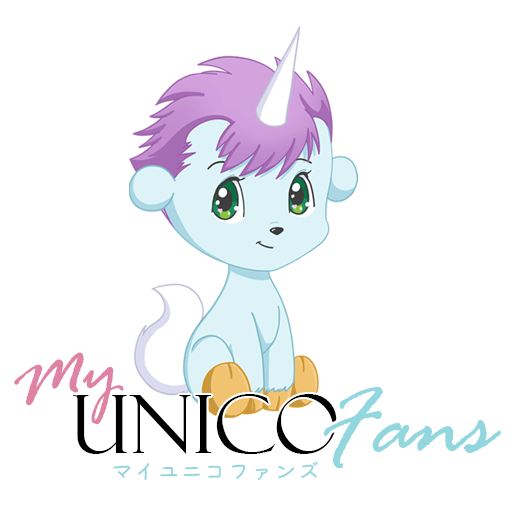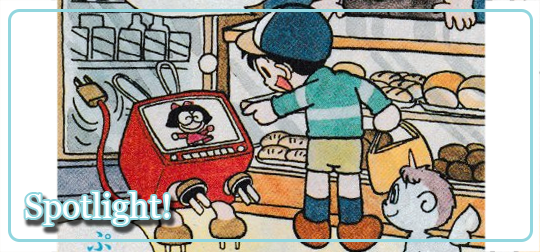
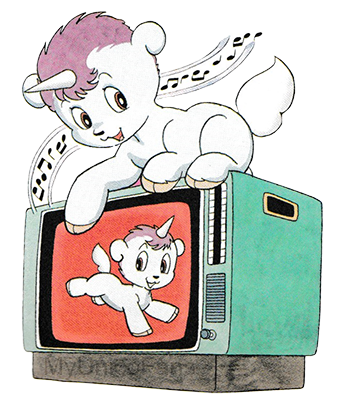
Last year, I wrote an article about The Excluded Chapters of Unico, which included comics that had not appeared in compilations over the years. In fact, they never republished a particular chapter after it came out in Shougaku Ichinensei (First Grader) magazine back in May 1983. That’s 40 years ago! We currently refer to the chapter as “Chapter 36” since we do not know its official title. As you may have guessed, it was the 36th episode to be published in the original magazine. While there were 43 chapters total for the First Grader version of Unico, this one seems to be the hardest to find.
After learning about Chapter 36’s existence, it was one of my goals to find the very magazine that contained the comic. Sometimes it’s a waiting game as older magazines can be hard to find, especially ones made for children. Thankfully, it only took a little over a year to find the exact magazine I was looking for. While others may shrug off this discovery, I had heart palpitations and smashed that “purchase” button so fast. It’s comical, but in some ways, it felt like finding a Holy Grail item, and I wasn’t letting the magazine get away.

The magazine arrived on November 3rd, which coincidentally is Osamu Tezuka’s birthday. I quickly read the comic and checked out the rest of the magazine. Apart from it being another silly misadventure with Esuo and Unico, it made me wonder why they didn’t include or republish the comic anywhere else. Maybe one day it’ll be included in some sort of set, but until then, I’d like to discuss the comic in this post.
Just a Heads up!
At this point, I’m hoping you know that there are two versions of Osamu Tezuka’s Unico. Most people are familiar with the Lyrica or shoujo comics version released from 1976 to 1979, which features the West Wind taking Unico to various spots to hide from Venus. The chapter we are discussing is from the First Grader version, which ran from 1980 to 1984. If you’ve discovered this post, but need a quick refresher, I recommend visiting this page to learn more about Unico’s manga history. If you don’t need a refresher, let’s continue!
What’s the Story?
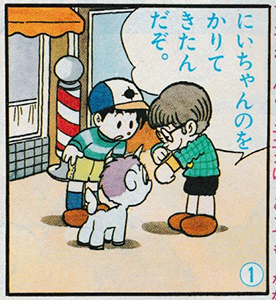
In this comic, we find Esuo talking to another young boy. The boy is showing off an expensive TV watch his older brother let him borrow. Esuo is amazed, but since the other boy is a bit obnoxious in showing off the watch, Esuo and Unico leave. Deep down, Esuo wishes he could also have a TV that followed him everywhere.
Later on, Esuo’s mother wants him to run an errand. While the boy and his unicorn are out, suddenly there’s an odd sound coming from behind them. Esuo turns around to find their family television with legs following close behind. Unico had used his magic to create a TV to follow Esuo wherever he wanted to go.
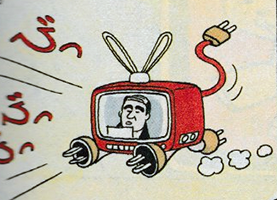
At first, Esuo is excited to watch television anywhere he wanted, but as usual, something goes wrong. The TV Unico brought to life acts more like a dog, which continues to follow Esuo everywhere. While this is basically what Esuo wished for, the TV becomes problematic. It was loud in places it shouldn’t be like on the bus or in other public areas. The TV also plays scenes from movies and commercials that would upset nearby people. For example, playing gunshot sounds near a police box or telling a delinquent walking with an older woman to take care of their parents.

Esuo tried to make the TV leave on its own by shooing it away, but it didn’t work. In a last effort, Esuo waits for a truck to drive by so he can toss the tv into the back. After he does this, he and Unico return home to finally get some rest.
But that’s not the end.
Loud noises wake the two from a sound sleep and they rush to see where it is coming from. Outside Esuo’s home there is the TV they tried to get rid of, but with it a whole litter of smaller TVs.

Spaying and neutering your television weren’t the norm back then, so now the two had an even bigger problem. With plenty of smaller TVs, the noise was even worse. The two needed to get rid of the TVs, so Unico transforms into his adult form to fly Esuo and the televisions to a new area.
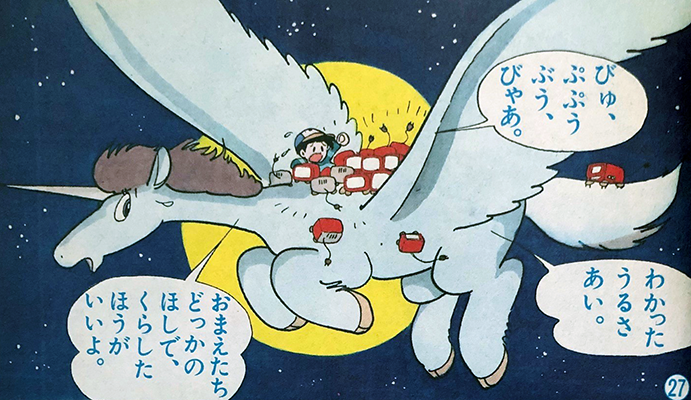
Well, they didn’t just find a new place for the TVs to go, they found a spaceport and a couple of astronauts. Esuo asks if they could take the televisions to space, and one astronaut simply replies “okay.” Not only are they going to get rid of these TVs in space, Unico makes a parting gift for each one because he’s such a kind little unicorn.
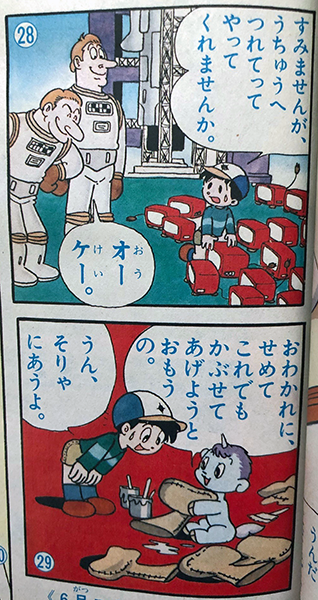
Surprise! The parting gifts are costumes to make the TVs look like E.T. the Extra-Terrestrial. In the last panel, we see one astronaut leading the group of TVs toward what we can only assume is a spaceship to take them to space. While this is amusing, it very well illustrates what was popular during the time they released this comic. The movie was quite a hit in Japan, and Osamu Tezuka felt a very special connection to Steven Spielberg’s film and the overall theme.
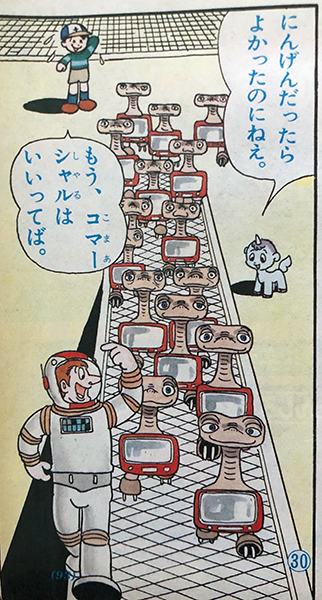
Interesting Facts!
This may be a comic for children, but since it’s 40 years old, it shares with us some interesting history.
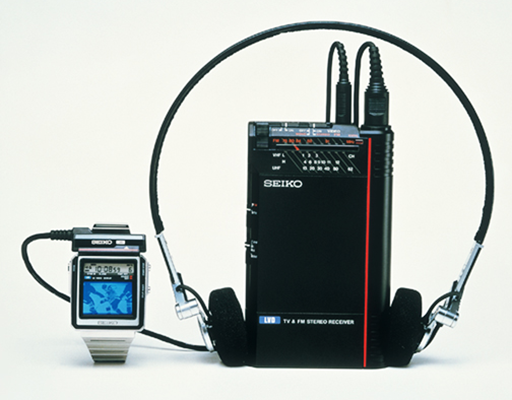
If you read this post and thought, “wait, a TV watch during the 80s? Did they have such technology?” Well, yes, but it’s nothing like we have now. Some of you may not be old enough to remember (ugh, that hurts to say), but there was, in fact, a watch with the ability to view television on. In 1982, Seiko released the TV Watch in Japan, and it became popular and later sold in other countries. In order to watch television on the watch, you had to use a receiver that picked up UHF and VHF channels. You’d use a cable connector on both receiver and watch, and bam, tiny television.
Also, a fun fact about this watch is it appeared in the 1983 James Bond film Octopussy1 as it’s quite “spy-like” if you think about it. To learn more about the watch, visit Seiko’s website or search for “Seiko TV Watch” on YouTube or your preferred search engine.
What’s up with E.T. in Unico?

Spielberg’s film E.T. the Extra-Terrestrial was released in 1982, and it made quite an impression on Tezuka. In an article written for the Tezuka Manga Ano Hi Ano Toki (Tezuka Manga That Time That Day), it states that Tezuka’s writing reveals a rivalry with Steven Spielberg, who was also influenced by Walt Disney.2 The relationship between the boy and the alien in the movie has a touch of what Tezuka called “Tezuka-style humanism,” which Tezuka says he had already been doing for a long time. Tezuka often parodied the works of other creators he perceived as rivals in his own works, so it’s interesting to see this in Unico. Either way, we believe it shows that Tezuka recognized and appreciated Spielberg’s work and added in E.T. to pay homage to him.
Note: E.T. also appears in Tezuka’s series, Buddha, along with Yoda from Star Wars and Cherry from Urusei Yatsura.
Why Was the Comic Never Republished?

This is something I do not know, and that’s okay. I know Tezuka often redid comics or wanted them excluded if he wasn’t satisfied. The general theme of this story is fine, but there could be some parts that might not be appropriate for younger audiences, especially by today’s standards. Since the TV is very much like a cat or dog, the treatment of the TV can be questionable, especially when Esuo throws it off an overpass to let it land in the back of a truck. What Esuo did is not something anyone should do as a person could be seriously injured if something falls while they’re driving.
The idea of dressing the TVs up as E.T. and sending them off into space to basically get rid of them seems a bit… horrible (which also makes it a little funny). The alien in the movie wanted to return home where the TVs felt like a mistake that needed to be removed by blasting them into space. Haha! Hopefully, the TVs ended up okay!
Final Thoughts…
I love seeing different aspects of Unico, and the First Grader version is quite comical compared to the original comics. The overall theme has a “be careful what you wish for” feel to it, which is why the things Esuo wants or has Unico do can ultimately create even more problems. Now, I find it funny that when Unico uses his magic, there’s no way he can take back whatever he did and so Esuo often ends up learning a hard lesson.

What I hope to see in the future is Tezuka Productions pulling out the older Unico related material that hasn’t been seen in years to create a comprehensive book for fans. Speaking of books, the 50th anniversary of the Black Jack series is being celebrated this year. “Black Jack Missing Pieces“3 is a book that provides a closer look at certain comic chapters and more on Osamu Tezuka’s techniques. Unico’s 50th anniversary will be here soon enough, so I’m always curious to see how they’ll celebrate Tezuka’s adorable unicorn. We’ll just have to wait and see!
Footnotes/Sources:
– No Longer Made: Seiko TV Watch From 1982 | aBlogtoWatch (November 5, 2022)
– SEIKO WATCH | Always one step ahead of the rest. (seikowatches.com)
– 十一月新刊情報|虫ん坊|手塚治虫 TEZUKA OSAMU OFFICIAL (November 11, 2023)
- 1. Seiko TV Watch | Bond Lifestyle (jamesbondlifestyle.com) (January 15, 2021) ↩︎
- 2. 手塚マンガあの日あの時+(プラス) シリーズ企画 手塚マンガとブーム:スター・ウォーズとSFXブームの時代(1977-1983) 第2回:スーパーマンの復活とE.T.降臨!|虫ん坊|手塚治虫 TEZUKA OSAMU OFFICIAL (May 6, 2022) ↩︎
- 3. “Black Jack Missing Pieces” will be available November 20, 2023, from publisher Rittosha. The book will be 384 pages and allow readers a glimpse into Osamu Tezuka’s editing techniques and more. Retail price: ¥4,950 ↩︎
